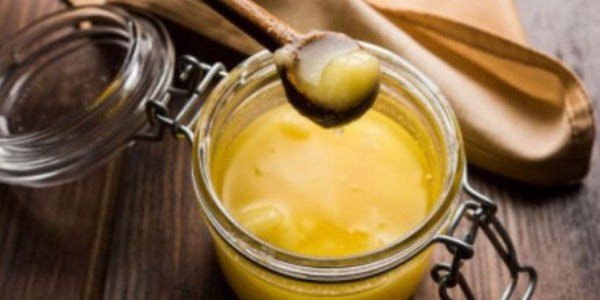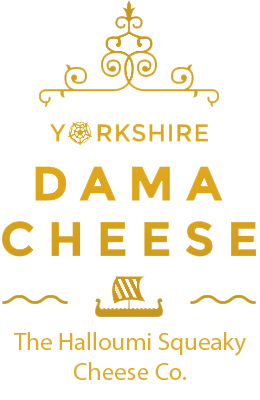
Ghee vs Butter: discover the benefits of our Yorkshire Dama produce
We have been busy churning!
Our butter range is the newest addition to our delectable selection of Yorkshire dairy produce.
Meet the stars of the show – ghee, unsalted butter, and salted butter – and stick around to find out what exactly is ghee, and who comes out on top in an epic battle of ghee vs butter.
Yorkshire Dama’s butter range
A knob of butter might be all you’re missing from taking your dishes into new, creamy heights of cooking.
Our Yorkshire Dama butter is locally produced and made 100% from cow’s milk cream with a touch of olive oil for a smoother, creamier spread.
That’s right - no need to go down the slippery slope of preservatives and additives as our Yorkshire Dama butter has no added e-numbers or preservatives. Our butter is made from the milk of grass-fed cows, resulting in added nutrients as a nice bonus!
Our butter range includes salted butter, unsalted butter, and ghee.
But do you know when to choose salted butter over unsalted? What is ghee and how do you use it?
Let’s find out.
Salted butter:
Butter with a touch of added salt. It really is that simple.
Has a slightly longer life in the fridge as the salt acts as a preservative.
Salted butter and unsalted butter can be used interchangeably, but salted butter tends to be more suited for savoury cooking and as an all-purpose butter.
Salted butter adds flavour and enhances existing flavours in your dishes. It is perfect for adding creaminess and texture to your dishes, whether it be sautéing vegetables, adding a finishing touch to sauces, or spreading it on toast.
Unsalted butter:
A creamy yet neutral flavour without the added salt.
Ideally used in baking recipes where precise measurements are more important. Unsalted butter also provides richer flavour, texture and volume to cakes, pastries, cookies, and desserts. A baker’s dream!
Using unsalted butter gives you full control of the flavour profile of your recipes as it allows the natural flavours of ingredients to seep through.
Ghee:
We hear you: wat is ghee, anyway? Simply put, ghee is a type of clarified butter with a buttery taste and a roasted, nutty aroma.
Ghee is made by heating butter until the liquid and milk separate from the fat. When the milk becomes solid, the remaining clear-golden oil is what we call ghee.
Ghee has multiple uses when cooking, yet it is ideal when frying or sauteing at high temperatures. It can be drizzled on steamed vegetables or used when roasting. You can use ghee in place of butter in several ways like in mashed potatoes, omelettes or even slathered on pancakes!
Ghee vs Butter
Ghee and butter both have benefits when cooking and recipes will often specify which is better for specific dishes and uses. Because ghee has a higher smoke point than butter, it is excellent when frying and cooking at high heat as it won’t burn or sputter like butter.
If you’re counting calories, ghee has marginally more calories than butter as it has a slightly higher fat concentration. However, when used in place of butter, ghee can have multiple health and dietary benefits.
Health benefits of ghee
Ghee is suitable for people who are lactose intolerant as it is lactose and casein-free due to being clarified.
Ghee has a long shelf-life without the need to be refrigerated - as long as you keep your ghee water-free!
Ghee has been used for medicinal purposes for thousands of years in India with believed digestive and anti-inflammatory properties.
Due to its high smoke point, ghee produces fewer toxins compared to other oils when heated.
Make your cooking butterlicious with Yorkshire Dama dairy produce
Enhance your cooking with our Yorkshire Dama butter range and choose from salted butter, unsalted butter, and ghee for all your cooking and baking needs!
